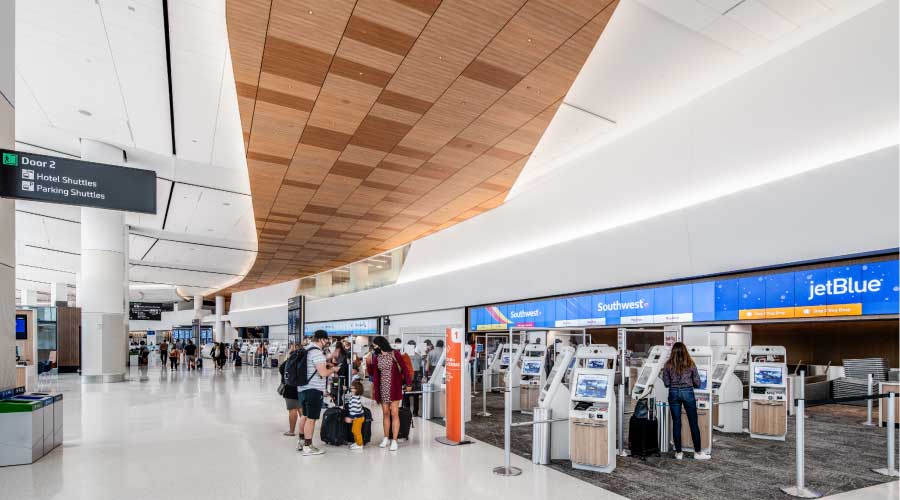9 Ways LEED for Schools is Different From LEED-NC
Sustainable Sites Credit 10 — Joint Use of Facilities:
Allow the building and its playing fields to be used for nonschool events and functions, such as making the auditorium, gym, cafeteria, one or more classrooms, playing fields, and/or joint parking available to the public.
IEQ Prerequisite 3 — Minimum Acoustical Performance:
Limit background noise from HVAC systems in classrooms and other core learning spaces to 45 dBA, and limit reverberation time in learning spaces with sound-absorptive finishes.
Sustainable Sites Prerequisite 2 — Environmental Site Assessment:
Conduct a Phase I Environmental Site Assessment (as described in ASTM E1527-05) to determine whether environmental contamination exists at the site. If contamination is suspected conduct a Phase II Environmental Site Assessment (as described in ASTM E1903-97, 2002).
Sustainable Sites Credit 9 — Site Master Plan:
The project must achieve at least 4 out of the following 7 credits using the associated calculation methods. This credit then requires that the achieved credits be recalculated using the data from the master plan. The 7 credits include:
- Sustainable Sites (SS) Credit 1: Site Selection
- SS Credit 5.1: Site Development — Protect or Restore Habitat
- SS Credit 5.2: Site Development — Maximize Open Space
- SS Credit 6.1: Stormwater Design — Quantity Control
- SS Credit 6.2: Stormwater Design — Quality Control
- SS Credit 7.1: Heat Island Effect — Nonroof
- S Credit 8: Light Pollution Reduction
Water Efficiency Credit 4 — Process Water Use Reduction:
Aimed at the commercial kitchens in schools, the credit requires schools to use no refrigeration equipment using once-through cooling with potable water, no garbage disposals, and water efficient appliances within at least four equipment types (clothes washers, dishwashers with racks, ice machines, food steamers, prerinse spray valves). Plus water-using equipment outside those categories must show a 20 percent reduction in water use from a benchmark or industry standard.
IEQ Credit 9 — Enhanced Acoustical Performance:
Design the building shell, classroom partitions and other core learning space partitions to an STC rating of at least 35. Reduce background HVAC noise level to 40 dBA.
Innovation and Design Process Credit 3 — School as a Teaching Tool:
Integrate the sustainable features of a school facility with the school�s educational mission.
IEQ Credit 10 — Mold Prevention:
Limit space relative humidity to 60 percent or less during all load conditions, both occupied and unoccupied. Develop and implement on an ongoing basis an IAQ management program.
IEQ Credit 8.1 — Daylight and Views — Daylight:
Two points possible if daylight access is achieved in 90 percent of classrooms, with a third point possible for achieving daylight in 75 percent of other regularly occupied spaces.
Related Topics:













